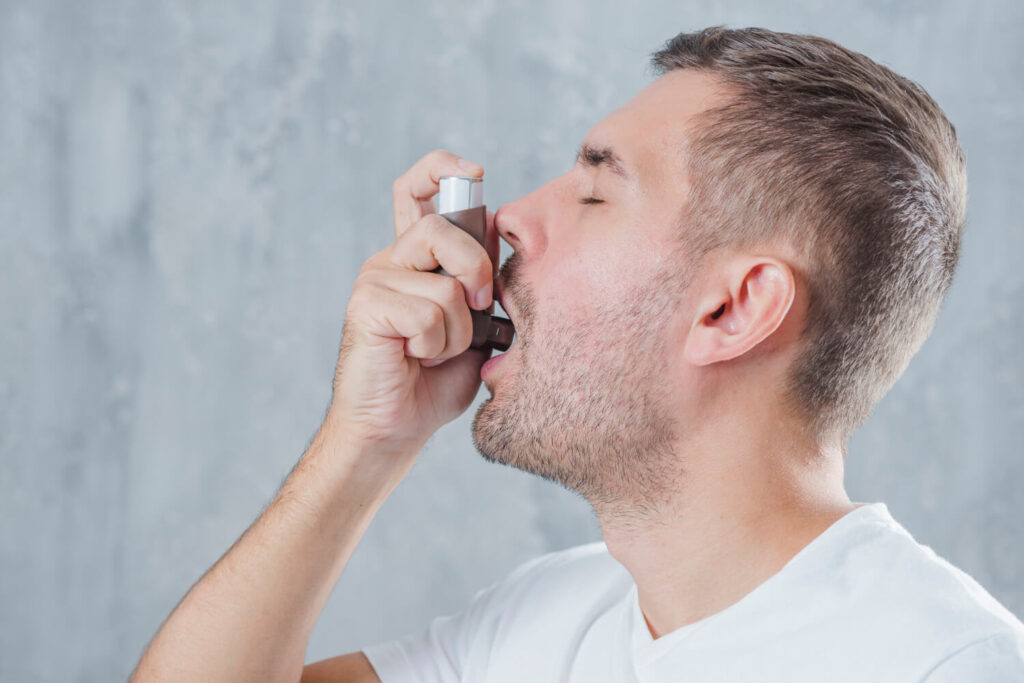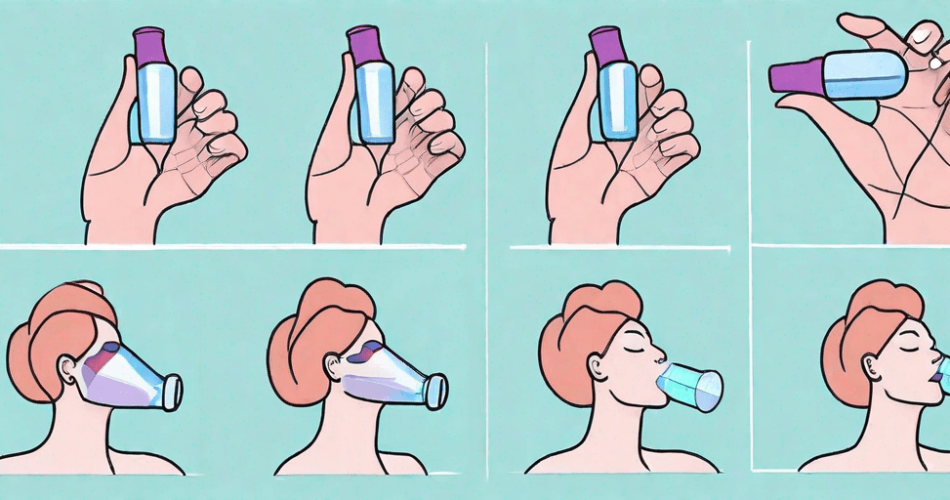Managing asthma involves various strategies, including the use of an asthma inhaler, which is an essential tool for both relieving and preventing the progression of symptoms. In this article, we will provide a comprehensive guide on how to use this medical tool effectively.
Discover why professionals refer its usage as a medical treatment for asthma today!
Understanding Asthma

What is Asthma?
Asthma is a chronic respiratory condition that affects millions of people worldwide. It is a complex disease that involves inflammation and narrowing of the airways, making it difficult for individuals to breathe freely. While asthma can develop at any age, it often starts in childhood and may persist into adulthood.
When a person with asthma encounters a trigger, their airways react by becoming inflamed and narrowed. This narrowing obstructs the flow of air in and out of the lungs, leading to a range of symptoms that can vary in severity from mild to life-threatening.
Common Symptoms of Asthma
Understanding this medical condition must mean that the patient understands its difference from other respiratory problem. That’s why it is vital to be familiar with the common warning signs for asthma.
Here are some of the common symptoms to take note of:
- wheezing (a whistling sound when breathing)
- coughing (especially at night or early in the morning)
- shortness of breath
- chest tightness
These symptoms can be intermittent, with periods of relative calm, or persistent, with symptoms occurring daily. Sometimes these signs can last, which is why an intervention of a doctor is a must. It would be best to schedule a consultation to verify the current condition.
Role of Triggers in Asthma
Combating asthma should not only involve the recognition of symptoms, but also knowing why it happens. This respiratory problem is usually caused by several triggers that can be found in our day-to-day activities. Thus, making patients more prone when not addressed immediately.
These triggers like allergens, that once inhaled can cause an inflammation narrowing the airway. Another sample is the inhalation of dirt, which can result in irritation and heavy breathing. Simple triggers like them can compromise the respiratory functions, thus progressing to asthma.
Other triggers may include:
- Respiratory infections:
- Physical activity or exercise:
- Changes in weather or temperature:
- Stress and strong emotions:
By understanding asthma triggers and taking proactive steps to avoid them, individuals with asthma can significantly improve their quality of life and minimize the impact of this chronic respiratory condition.
The Importance of Inhalers in Asthma Management

How Inhalers Work
While there is no cure for asthma, it can be effectively managed with the help of inhalers. Asthma inhalers are devices that deliver medication directly into the airways, providing quick relief or long-term control of asthma symptoms. Inhalers contain medication in the form of a mist or powder, which is inhaled through the mouth and into the lungs. The medication works by opening up the airways, reducing inflammation, and relaxing the muscles surrounding the airways.
When you inhale the medication from the inhaler, it travels deep into your lungs, where it can directly target the inflamed airways. This targeted delivery allows for a faster and more effective response compared to oral medications, which have to pass through the digestive system before reaching the lungs.
It is important to note that inhalers are not a cure for asthma but rather a way to manage and control the symptoms. They provide relief during an asthma attack and can also be used preventively to minimize the frequency and severity of asthma symptoms.
Different Types of Inhalers
There are several types of inhalers available for asthma management. The most common types include:
Reliever inhalers
These inhalers contain a medication called a bronchodilator, which quickly opens up the airways during an asthma attack or when experiencing symptoms. Bronchodilators work by relaxing the muscles around the airways, allowing them to widen and improve airflow. They provide immediate relief and can be a lifesaver during a sudden asthma episode.
Preventer inhalers
Also known as controller or maintenance inhalers, these inhalers are used daily to control inflammation and prevent asthma symptoms from occurring. Preventer inhalers contain corticosteroids, which help reduce the swelling and irritation in the airways, making them less sensitive to triggers. These inhalers are not meant for immediate relief but rather for long-term management of asthma.
Combination inhalers
These inhalers contain both a bronchodilator and a steroid medication, providing both quick relief and long-term control of asthma symptoms. Combination inhalers are often prescribed to individuals with moderate to severe asthma who require both immediate relief and ongoing management. They are convenient as they combine two medications in one device, simplifying the treatment regimen.
It is essential to understand the purpose and correct usage of each type of inhaler prescribed to you by your healthcare provider. They will determine the most appropriate inhaler based on the severity of your asthma, your symptoms, and your individual needs.
Step-by-Step Guide to Using an Asthma Inhaler

Preparing the Inhaler
Before using your inhaler, it is important to ensure it is prepared correctly. Follow these steps:
- Remove the cap from the inhaler and shake it well.
- If it is a new inhaler or if it hasn’t been used for a while, prime it according to the instructions provided.
- Check the expiration date on the inhaler to ensure it is still effective.
Preparing your inhaler properly is essential for optimal medication delivery. By removing the cap and shaking the inhaler, you ensure that the medication is properly mixed and ready for use. Priming a new inhaler or one that hasn’t been used in a while helps to ensure that the first dose is accurate and effective. Checking the expiration date is crucial, as expired medication may not provide the intended relief.
Correct Inhalation Technique
Proper technique is crucial for effectively delivering the medication to your lungs. Follow these steps:
- Stand up or sit up straight, ensuring an upright posture.
- Exhale fully, completely emptying your lungs.
- Place the mouthpiece of the inhaler between your lips, creating a tight seal.
- Press down on the inhaler to release one dose of medication while simultaneously taking a slow, deep breath in.
- Hold your breath for 10 seconds or as long as you comfortably can.
- Exhale slowly through your mouth.
Proper inhalation technique is vital to ensure that the medication reaches your lungs effectively. It is important to follow the specific instructions provided with your inhaler, as different types may have slightly different techniques. Your healthcare provider or pharmacist can also provide guidance on the correct inhalation technique for your specific inhaler.
Cleaning and Maintenance of Your Inhaler
To ensure optimal performance and prevent the inhaler from becoming clogged, it is essential to clean and maintain it regularly. Follow these guidelines:
- Remove the inhaler cap and rinse the mouthpiece with warm water.
- Gently shake off excess water and let the parts air dry.
- Do not rinse the medication canister, as it contains the medication required for treatment.
- Check the instructions provided by the manufacturer for any additional cleaning steps or recommendations.
Cleaning and maintaining your inhaler is important to keep it functioning properly. Following any additional cleaning steps or recommendations provided by the manufacturer ensures that you are properly maintaining your inhaler.
Common Mistakes When Using an Inhaler
Not Shaking the Inhaler
Shaking the inhaler ensures that the medication is adequately mixed, providing an effective dose. Failure to shake the inhaler may result in inconsistent medication delivery and reduced symptom relief.
Incorrect Breathing Technique
Many individuals make the mistake of taking quick, shallow breaths while inhaling the medication. It is important to take slow, deep breaths to allow the medication to reach the deepest parts of the lungs for maximum effectiveness.
Recognizing When to Use Your Inhaler
It is crucial to be aware of the signs that indicate when to use your inhaler. Promptly using your inhaler when symptoms arise can help prevent them from escalating and improve overall asthma control.
Conclusion
Knowing how to use an asthma inhaler correctly is essential for effectively managing asthma symptoms. By understanding the basics of asthma and its proper usage, individuals with asthma can better control their condition and improve their quality of life.
If you have any questions or concerns about using your inhaler, consult with your healthcare provider for personalized guidance and support. Remember, with the right knowledge and techniques, you can take control of your asthma and breathe easier.



